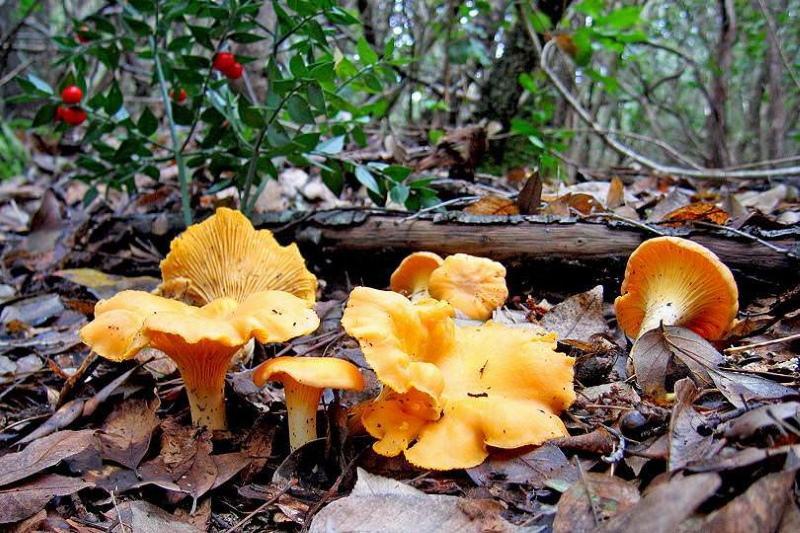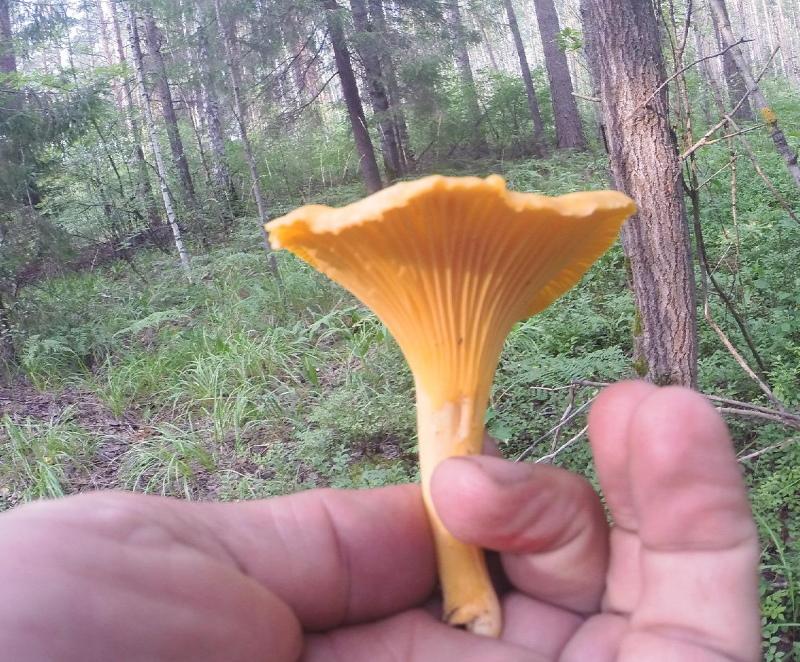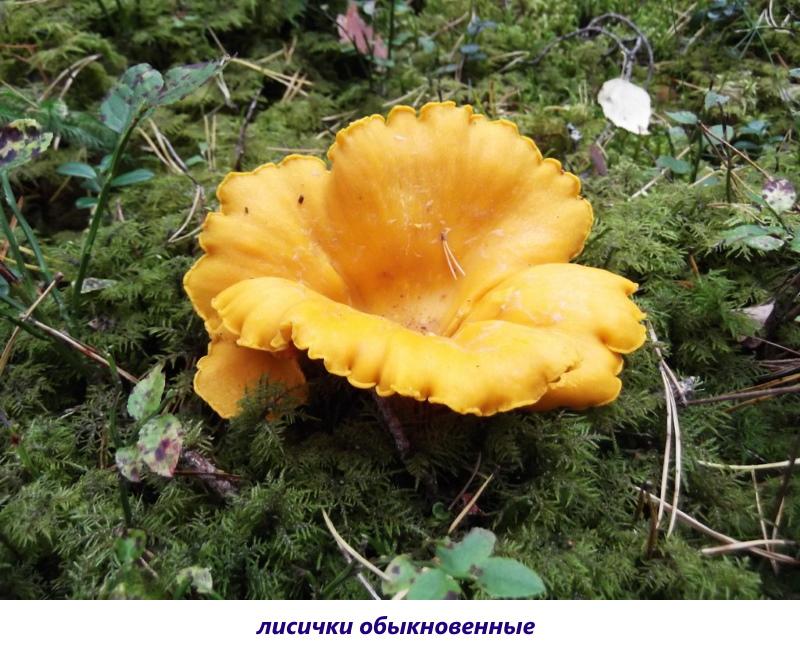It turns out that they are not only orange - chanterelle mushrooms, photo and description, false chanterelles
 You will definitely not confuse them with a pale toadstool thanks to the bright color of elegant hats on slender legs. And no one else has such an unusual taste with a light fruity aftertaste. We are talking about such forest fashionistas as chanterelle mushrooms, photos and descriptions, the false species of which we will study today. Many people think that chanterelles are only yellow-orange, but this is not so. Most of the species are indeed colored in these sunny colors. But among them there are originals with almost red and even brown hats, while they are edible. How to recognize chanterelles in the forest?
You will definitely not confuse them with a pale toadstool thanks to the bright color of elegant hats on slender legs. And no one else has such an unusual taste with a light fruity aftertaste. We are talking about such forest fashionistas as chanterelle mushrooms, photos and descriptions, the false species of which we will study today. Many people think that chanterelles are only yellow-orange, but this is not so. Most of the species are indeed colored in these sunny colors. But among them there are originals with almost red and even brown hats, while they are edible. How to recognize chanterelles in the forest?
Chanterelle mushrooms - photo and description, false chanterelles

Chanterelles love wet places, especially under spruce and pine trees, and there are also many of them in mixed and deciduous forests. They appear closer to mid-summer, and you can pick mushrooms until mid-autumn.
What are the types of edible chanterelles
The orange mushrooms that we are used to seeing in the pictures are not the only species of chanterelles. There are more than fifty of them, and most often you can see such chanterelles in the forest:
- Common with a white, slightly sour, pulp inside and a yellow surface color. They settle under conifers and deciduous trees.

- Gray with a characteristic color, both the pulp and the surface of the stem and cap. They grow in larch trees, but such mushrooms are usually not harvested. Chanterelles both look strange and taste "none", not even fragrant, although they are edible.

- Cinnabar red, small, reddish pink, with fibrous flesh. They grow in oak groves.

- Velvety with an orange cap and a lighter leg. The pulp is fragrant, yellow. You need to look for them on acidic soils in deciduous forests.

- Yellowish with a dark yellow stem and beige flesh, tasteless and odorless. But they have a beautiful chocolate-colored hat covered with scales. Such beauty grows in wet conifers.

- Tubular with white flesh, but a gray-yellow mushroom body. Although they are edible, they are not very tasty, as they taste bitter and smell like earth. They grow in coniferous forests.

Common chanterelles are never wormy. In their pulp there is a substance that destroys all pests - quinnomanosis.
False chanterelles and their difference from real ones
In fact, there are not so many mushrooms in the forest that can be confused with chanterelles. Most of all, only two varieties are similar to them:
- olive omphalot, which also has orange lamellar caps, only much larger;

- orange talker - small mushrooms more like chanterelles with a yellow cap, darker in the center.

If the talker is not dangerous (she simply refers to inedible), then omphalot is poisonous mushroom.
However, if you look closely, then false chanterelles can be easily distinguished from real ones. They grow one at a time, have thin hollow legs, flat-edged caps, and bright colors, often darker in the center of the caps. Their flesh usually has an unpleasant aroma, and when pressed, it can only darken a little.
While chanterelles turn red after pressing, their caps are always wavy and monochromatic, and their legs are fleshy and are one with the cap. Yes, and real chanterelles grow only in families, and false ones often singly.